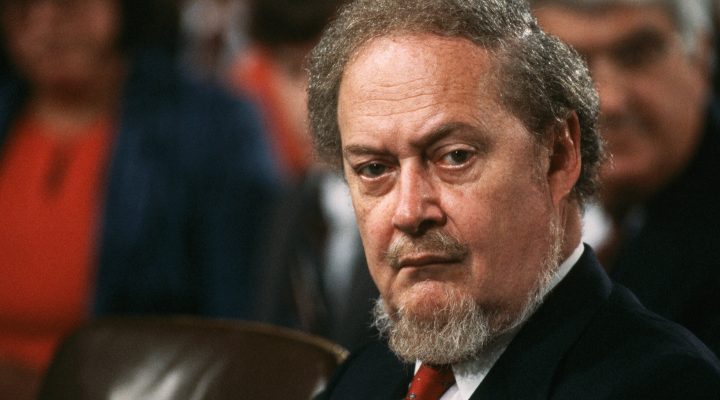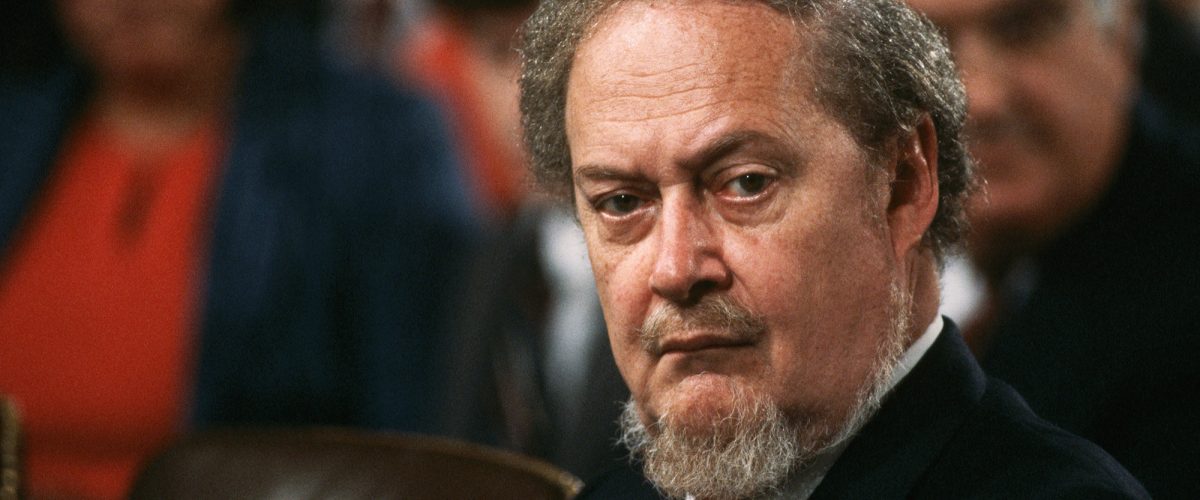In recent days, the Supreme Court of the United States has issued several landmark decisions.
In Dobbs v. Jackson Women’s Health Organization, six of the nine justices decided to overrule the court’s 1973 landmark decision in Roe v. Wade, which held that a woman has a fundamental right under the U.S. Constitution to terminate her pregnancy, and its 1992 decision in Planned Parenthood v. Casey, which upheld the Roe ruling.
Justice Samuel Alito, author of the majority opinion, wrote, “We hold that Roe and Casey must be overruled. The Constitution makes no reference to abortion, and no such right is implicitly protected by any constitutional provision, including the one on which the defenders of Roe and Casey now chiefly rely — the Due Process Clause of the Fourteenth Amendment.”
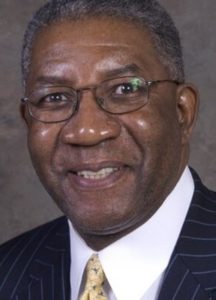
Wendell Griffen
In New York State Rifle & Pistol Association v. Bruen, the same six-justice majority struck down a New York law that required anyone wanting to carry a handgun in public to prove they had a “proper cause” to do so, holding that the law violated the right to bear arms guaranteed by the Second Amendment and the Fourteenth Amendment, which made the Second Amendment applicable to the states.
In the majority opinion, Justice Clarence Thomas wrote: “Apart from a few late-19th-century outlier jurisdictions, American governments simply have not broadly prohibited the public carry of commonly used firearms for personal defense. Nor have they generally required law-abiding, responsible citizens to ‘demonstrate a special need for self-protection distinguishable from that of the general community’ to carry arms in public.”
Justice Thomas made that assertion in the face of more than a century of state regulation — in New York and elsewhere throughout the United States — concerning who can carry firearms in public and for what purposes.
In West Virginia v. Environmental Protection Agency, the six-justice majority declared the Environmental Protection Agency does not have authority to promulgate a rule to regulate carbon dioxide emission standards under Section 111 of the federal Clean Air Act. The EPA issued a Clean Power Plan regulation in 2015 during the Obama administration. Its implementation was stayed (meaning prevented from taking effect) by the Supreme Court in 2016.
During the Trump administration, the EPA repealed the Clean Power Plan in 2019 and promulgated a different regulation called the Affordable Clean Energy rule. When the Trump-era repeal and ACE rule was challenged in federal court by several states and private parties, the U.S. Court of Appeals for the D.C. Circuit vacated the Trump-administration repeal of the Clean Power Plan and the ACE rule and remanded the case to the EPA for further consideration.
After the Biden administration entered office, the EPA asked — and no other party objected — that the court mandate regarding the Clean Power Plan be stayed while the EPA considered whether to issue a new rule regulating carbon dioxide emission limits. Despite the fact that the Court of Appeals granted the motion to stay its ruling vacating the Clean Power Plan and despite the EPA’s explicit declaration that it would not enforce the Clean Power Plan but would craft a different regulation, Chief Justice John Roberts and five other Justices (Thomas, Alito, Gorsuch, Kavanaugh, Barrett) held that Congress did not authorize the EPA in the Clean Air Act to determine “the best system of emission reduction” identified in the Clean Power Plan. In doing so, the justices decided the EPA lacked authority to regulate carbon dioxide emission reduction even though there was no existing controversy.
And as the Guardian newspaper correctly reported, on June 27, the same six-justice majority overturned decades of constitutional law concerning the separation of church and state and achieved one of the most long-standing goals of the Christian right: the return of official Christian prayer to public schools by its decision in Kennedy v Bremerton School District.

Joseph Kennedy in a photo provided by his law firm, First Liberty Institute.
As with the West Virginia v. EPA decision, this case had a strange path to the Supreme Court. It was filed in 2015 by Joseph Kennedy, who formerly worked as a public high school football coach in a Seattle suburb. Kennedy sued the school district that once employed him and alleged that he was subjected to religious discrimination after the school objected to his habit of making public, ostentatious Christian prayers on the 50-yard line at football games, surrounded by young athletes.
Kennedy lost at the district and circuit levels. He moved to Florida in 2019. That ordinarily would have rendered his case moot. However, the Supreme Court agreed to hear his case anyway. Then six of the nine justices ruled in his favor.
One word sums up these rulings and the ominous mindset of the six conservative justices whose thinking produced them.”
One word sums up these rulings and the ominous mindset of the six conservative justices whose thinking produced them: Bork, as in Robert Bork.
Robert Bork was a prominent Yale law professor who became solicitor general of the United States in the Justice Department and was solicitor general when the Watergate scandal was exposed. After Special Prosecutor Archibald Cox requested that President Richard Nixon produce the audio tapes of his Oval Office conversations, Nixon ordered U.S. Attorney General Elliot Richardson to fire Cox. Richardson refused to do so and resigned. His chief deputy, Deputy Attorney General William Ruckelshaus, also resigned because he considered Nixon’s order to fire Cox “fundamentally wrong.” Then Nixon ordered Bork, as Acting Attorney General, to fire Cox. Bork fired him, said he intended to resign after doing so, but that Nixon talked him out of resigning.
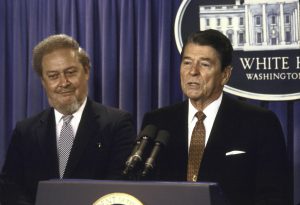
US President Ronald W. Reagan speaks at a press conference while standing with his Supreme Court Justice nominee Robert H. Bork. (Photo by Diana Walker/Getty Images)
Bork later was nominated and confirmed as a federal judge on the U.S. Court of Appeals for the District of Columbia Circuit (the D.C. Circuit), where he served from 1982 to 1988. In 1987, President Ronald Reagan nominated Bork to the Supreme Court.
Bork’s nomination was opposed by civil rights groups based on his views on civil rights. As a law professor and as a federal appellate judge, Bork was a fierce critic of the Supreme Court’s rulings on the First Amendment, the Fourteenth Amendment and federal power. Bork opposed the right to privacy. He opposed the Roe v. Wade decision. During his nomination to become solicitor general, Bork supported the rights of Southern states to impose a poll tax. He opposed passage of the Civil Rights Act of 1964 and criticized the 1965 Supreme Court decision in Griswold v. Connecticut, which struck down an 1873 Connecticut law that prohibited the use of contraceptives for married couples. Bork’s nomination was defeated in the U.S. Senate by a vote of 42 to 58. He later resigned from the judiciary and spent the rest of his life as a law professor and leading conservative thinker.
Opponents to racial justice, women’s rights, First Amendment guarantees of separation of church and state and protection of the media and individuals from governmental censorship, right-wing Christian nationalists, and free market fundamentalists have been working since the Supreme Court’s 1954 landmark decision in Brown v. Board of Education for this moment.
“The defeat of Bork’s nomination led to what became the Federalist Society, and the current conservative majority on the Supreme Court reflects the legal and social philosophy of Bork.”
Robert Bork was nominated to begin to reverse the progress in civil rights that occurred during the era when Earl Warren was Chief Justice of the Supreme Court. The defeat of Bork’s nomination led to what became the Federalist Society, and the current conservative majority on the Supreme Court reflects the legal and social philosophy of Bork. Since the time Bork’s nomination was defeated, conservatives have worked to advance his thinking about the meaning of justice and the role of courts and judges. They were disappointed when Justice Anthony Kennedy voted to retain the Roe v. Wade decision and later when he upheld that ruling in Planned Parenthood c. Casey.
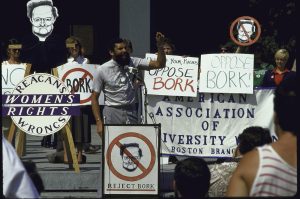
Pastor Graylan Ellis-Hagler speaks at rally for the rejection of Robert H. Bork as a Supreme Court Justice. (Photo by Steve Liss/Getty Images)
However, recent Supreme Court decisions show that Chief Justice John Roberts and Justices Clarence Thomas, Samuel Alito, Neil Gorsuch, Brett Kavanaugh and Amy Coney Barratt are cut from Bork’s mindset. They and other federal judges nominated by Presidents Reagan, George H. Bush, George W. Bush and Donald Trump are Bork’s right-wing disciples in the Federalist Society.
Bork explains why Mitch McConnell blocked President Barack Obama’s nomination of Merrick Garland to the Supreme Court after the death of Justice Antonin Scalia. They hoped the next president would be a Republican who would nominate someone like Bork.
Bork explains why so-called evangelical Christian conservatives supported a sociopath and idiot named Donald Trump with such enthusiasm in 2016.
“Bork explains why so-called evangelical Christian conservatives supported a sociopath and idiot named Donald Trump with such enthusiasm in 2016.”
Bork explains why McConnell and his Republican Senate cronies worked so hard to get Brett Kavanaugh confirmed after Trump nominated Kavanaugh when Justice Kennedy retired, and why they did not want a serious investigation into allegations about his boorish behavior.
Bork explains why McConnell rushed to get Amy Coney Barratt confirmed in the weeks leading up to the November 2020 presidential election.
These jurists have waited their entire careers to make court rulings that Bork would have made. Unless the present make-up of the Supreme Court undergoes a drastic change, they will use the coming years to continue doing so, much to the chagrin and misery of people who suffer from injustice.
Welcome to the Bork era.
Wendell Griffen is an Arkansas circuit judge and pastor of New Millennium Church in Little Rock, Ark.
Related articles:
A radical court on the move | Analysis by Stan Hastey
This Supreme Court’s dangerous vision of ‘history and tradition’ | Analysis by Robert P. Jones

